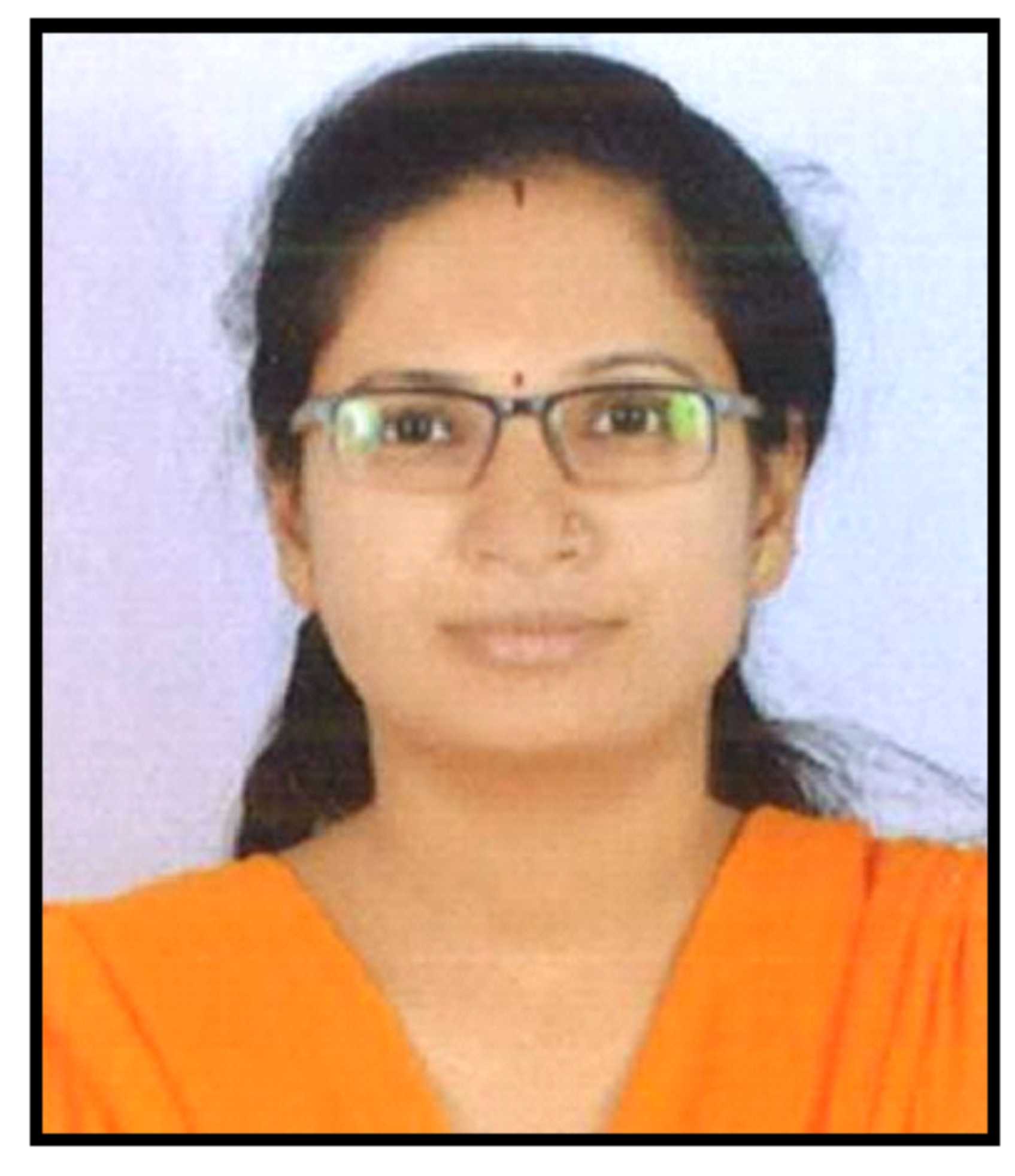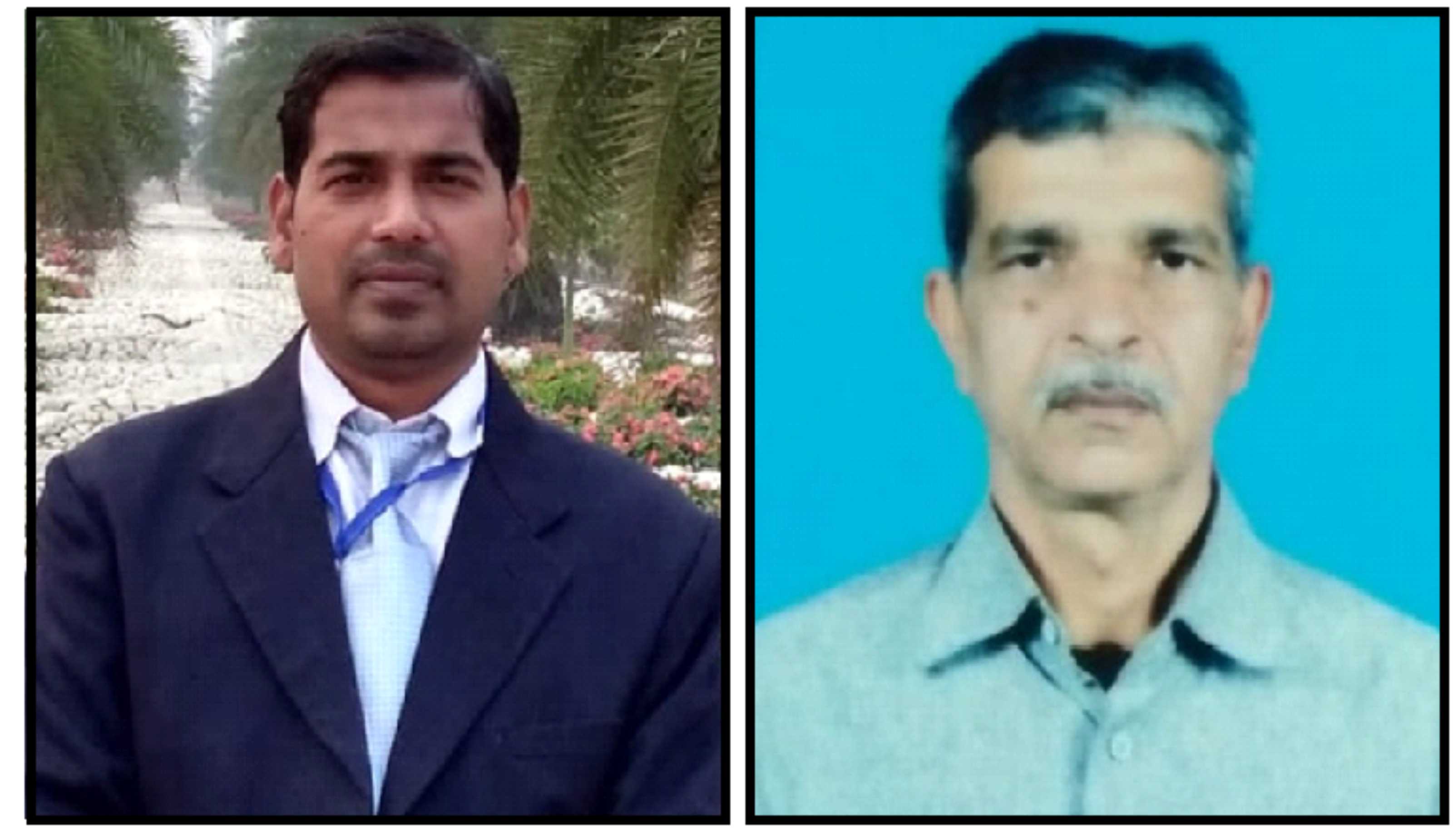- Call Us: +91 9425210308
- Email Us: shodhsamagam1@gmail.com
- RNI : CHHBIL/2018/77892
- ISSN : 2581-6918 (Online), 2582-1792 (Print)
Archieved Data
Publishing Year : 2023
Read Abstract
A thorough reading of this research (Global economic volatilities and economic growth in sustainable form) delves into important details like “what is global economic volatilities and reasons behind it” and what are the impacts of the 18th G20 summit to tackle this global issue with its roadmap of economic inclusion, sustainability, and development. We discuss here the role of Indian values and innovations that how we can give fight a global economic problem through economic growth in a sustainable form. As the 18th G20 summit theme is “Vasudhaiva Kutumbakam” the whole earth is one family and as a family, we should plan things together, phase issues together, and enjoy the taste of success together.
Read Keyword
Volatilities, Sustainable, Roadmap, Inclusion, Innovation, Vasudhaiva Kutumbakam.
Read Reference
1. https://www.imf.org
Read Abstract
Savings and investment are the first two steps in a positive cycle that leads to capital formation in a country. More than any other group of people, Indian households save money for their future. A woman’s salary at the time was simply a secondary source of income. However, the importance of a woman’s income has increased in contemporary culture. Women must invest in order for families to be able to handle the unforeseen catastrophes of life. Male and female investors behave differently, according to a number of research. Women’s lower risk tolerance results in lower investment returns. The purpose of this paper is to examine the investing habits of affluent women. A variety of goods, including gold, mutual funds, loans, preferred shares, stock, investment trusts, policies, and cash accounts are all examined in terms of general knowledge and attitude in the study. The research has also made an effort to identify the variables that affect investors’ decisions the most. Banks have relatively low risk factors for investments, followed by the post office and mutual funds, while mutual funds have significant danger factors.
Read Keyword
Investment Behaviour, Working women, Types of investments.
Read Reference
1. Jisha V G, (2017), A Study on The Perception Of Investment Pattern Among Urban Working Women With Reference To Coimbatore City, International Journal Of Engineering Science And Computing, Volume 7, Issue 2.
Read Abstract
Basel Convention on the Control of Transboundary Movements of Hazardous Wastes and their Disposal, 1989, aimed mainly, among many other things, to curb the menace of unregulated transboundary movement of hazardous wastes, especially from developed to the developing states, by introducing measures like notification, prior informed consent, offering capacity building programs and technical assistance for hazardous waste disposal in environmentally sound manner through regional centres in the wake of popular movements against ‘toxic waste colonialism’. However, it is noticed that despite all attempts illegal trade in hazardous wastes continues and so is the increase in annual waste generation. Moreover, South Asian region particularly feels neglected given that no regional centre under Basel convention has been provided for one of the most populous regions of the world. Hence, a lot remains to be done to really achieve the objectives of the convention.
Read Keyword
Basel, Convention, Colonialism, Dumping, Hazardous, Toxic.
Read Reference
1. ‘WHO Director-General’s opening remarks at the media briefing on Covid 19’ (11 March 2020) available at<https://www.who.int/director-general/speeches/detail/who-director-general-s-opening-remarks-at-the-media-briefing-on-covid-19—11-march-2020> last accessed on 1 January 2023.
Read Abstract
ई-संविदा जिसे अन्य शब्दों में ई-कॉमर्स के नाम से भी जाना जाता है। वर्तमान में वाणिज्य के क्षेत्र में बहुत ही प्रचलित अवधारणा है। तकनीकी विकास के साथ ही साथ ई-संविदाओं में भी इजाफा हुआ है। वर्तमान में इंटरनेट का प्रयोग सामान्य जन अपने दैनिक जीवन की आवश्यकताओं जैसे की वस्तुओं की खरीदारी एवं बिक्री के लिए कर रहा है। ई-संविदा उस संविदा को कहा जाता है जिसको इलेक्ट्रॉनिक माध्यमों से किया जाता है जैसे की ई-मेल, मैसेंजर, एयूएलए आदि। ई-संविदा के माध्यम से कोई भी व्यक्ति घर बैठकर बहुत ही आसानी से अपनी आवश्यकताओं को पूरा कर रहा है। ई-संविदा में सामान्य संविदा की तरह पक्षों का एक दूसरे के आमने-सामने होना आवश्यक नहीं होता है। इस प्रकार की संविदा में पक्षकार इलेक्ट्रॉनिक साधनों का प्रयोग करके देश के एक कोने से बैठकर विश्व में कहीं भी किसी भी व्यक्ति के साथ संविदा कर सकता है वर्तमान शोध पत्र के माध्यम से ई-संविदा की अवधारणा एवं भारत के सन्दर्भ में इससे सम्बन्धित विधि के बारे में अध्ययन किया जायेगा।
Read Keyword
ई-संविदा, करार, साइबर, प्रौद्योगिकी, इण्टरनेट, इलेक्ट्रॉनिक साधन.
Read Reference
1. सिंह, अवतार ,2022 संविदा विधि एवं विनिर्दिस्ट अनुतोष अधिनियम, ईस्टर्न बुक कम्पनी।
Read Abstract
Air pollution is a major concern in third-world countries as a result of industrialization, modernization, and population growth. In addition, hazardous gases from automobile and industrial exhaust continue to be added to the atmosphere, making the overall concentration of pollutants worse every day. People have come to understand that breathing filthy air might be detrimental to their health. Public health risks like cardiovascular illness, respiratory disorders, chronic obstructive pulmonary disease (COPD), and asthma are on the rise all over the world, and outdoor air pollution is a major contributor. Sources, contaminants, exposures, and health impacts of outdoor air pollution are reviewed, along with the current state of the problem and projected future developments. The purpose of this review was to compile data from various studies to paint a picture of where we stand in terms of understanding the connection between outdoor air pollution and health; to educate the public on the risks associated with prolonged exposure to such pollution, and to suggest strategies for counseling at-risk populations to lessen their exposure.
Read Keyword
Pollution, Health, Industrialization.
Read Reference
1. Ackermann-Liebrich U, Rapp R. 1999. Epidemiologicaleffects of oxides of nitrogen, especially NO2. In: Airpollution and Health London: Academic Press. pp. 559–584.
Read Abstract
Issues of extinction, endangerment, and conservation of wildlife are discussed in length. The current situation regarding the preservation of animals on a global scale must be known. The best way to protect wildlife is to protect their habitats. Numerous initiatives and practices have been implemented to promote forestation and reduce deforestation. Equally important are efforts to reduce marine pollution by legislation and public education, as well as those to curtail the illegal pet trade, excessive shooting, and hunting.
Read Keyword
Current trends, Conservation, Biodiversity, Wildlife, Habitat.
Read Reference
1. Assal TJ, Anderson PJ, Sibold J. (2016) Spatial and temporal trends of drought effects in a heterogeneous semi-arid forest ecosystem. Forest Ecology and Management. 365:137-151.
Read Abstract
Cryptocurrency, a digital asset based on decentralized ledger technology, has seen rapid adoption and usage in commercial, economic, and societal contexts. Its regulatory administration and the development of a robust regulatory framework are critical to ensuring the secure and responsible use of cryptocurrencies. In this research paper, we will undertake a comprehensive exploration of the challenges posed by cryptocurrency regulation, shedding light on both the difficulties faced in regulating cryptocurrency transactions and the opportunities that lie ahead for regulatory agencies and Governments.
Read Keyword
Cryptocurrency, Digital Currency, Regulatory Compliance, Financial Regulation, Decentralized Finance (DeFi), Financial Stability.
Read Reference
1. Nakamoto, S. (2008). Bitcoin: A Peer-to-Peer Electronic Cash System.
Read Abstract
Tourism is currently one of the fastest growing industries. People are becoming more and more interested in all kinds of activities and are traveling great distances to participate in events that intrigue them. The main findings of the study show that although tourism organizations have become more aware of the potential and importance of events, there are still large differences in how these organizations use events. strategically and the extent to which women in SHGs work around the tourist destination in which they participate. receive. their jobs and income sources are created. Events are their own business and have their own business plans across a number of tourism organisations, who have embedded them deeply into their wider tourism strategies.
Read Keyword
Tourism, Self-Help Groups.
Read Reference
1. Agarwal, B. (1997), “‘Bargaining’ and gender relations: within and beyond the household”, Feminist Economics, Vol. 3 No. 1, pp. 1-51.
Read Abstract
The implementation of the Goods and Services Tax in India has ushered in a significant digital transformation within the taxation ecosystem. The primary objective behind this transition to GST was to automate tax compliance procedures, resulting in simplified processes and increased generation of tax revenue. Digitization presents numerous advantages for businesses, particularly through the digitization of invoices, also known as e-invoicing. This process initiated with the introduction of digital payment methods and has subsequently led to a transformative shift in business operations. A notable innovation under GST is witnessed in document management practices, where there has been a transition from pre-authenticated excise bills to electronic invoicing systems which enable real-time transaction reporting. By embracing these digital tools, businesses are able to achieve error-free compliance while enjoying substantial benefits. Moreover, this shift towards digitization has greatly benefited not only Government bodies but also tax consultants by streamlining processes and promoting more efficient tax compliance mechanisms.
Read Keyword
E-Invoicing, E-Way Bill, Dynamic QR, Automated Return Scrutiny, Electronic Filing, Data Triangulation.
Read Reference
1. Agrawal, M. (2019, July 31). Study of the Leading Sectors of Indian Economy after GST Implementation - A Literature Review. https://scite.ai/reports/10.36895/imr/2019/v13/144363.
Read Abstract
The development of technologies provides solutions to many current issues and encourages humanity to make constant progress. The regulation of their use in society is coming under equally intense demand. Antitrust laws have been adapting quickly to the changing market, helped by technical advice and suggestions from a variety of international institutions and domestic governments. The same degree to which they are enforced elsewhere, the principles of antitrust policies and data protection must also be upheld in the digital economy. Opponents of Antitrust laws argue that regardless of any merit they may have had in the past, they are irrelevant in a DE1 because of the exponential rate at which dynamic technology development is accelerating. They contend that quick innovation has virtually eliminated the ability to amass market power. Whatever the rate of technological advancement, it is impossible to allow the markets, especially the digital market, to become anarchic since this could pose a threat to the orderly society. Therefore, it is important that we foster an environment where new economic activity may develop. This can be done by supporting sound and rigorous regulatory policy with complementing antitrust policy and by fostering the right regulatory framework for the DE.
Read Keyword
DE, Big Data, Privacy Right, Law of Data Protection, Antitrust Law.
Read Reference
1. DE (Digital Economy)
Read Abstract
वर्तमान युग में परिवर्तन का दौर चला आ रहा है और इस परिवर्तन ने दुनिया को कल्पनातीत ढं़ग से बदल दिया है। दुनिया में आदिम युग से कृषि युग और कृषि युग के पश्चात् औद्योगिक युग में प्रवेश किया, लेकिन इस परिवर्तन के युग ने एक शताब्दी से भी कम समय में दुनिया को औद्योगिक युग से पीछे छोड़कर सूचना के युग में लाकर खड़ा कर दिया है। इस दौरान दुनिया में समाज का एक हिस्सा समृद्धि की सीढ़ी चढ़ गया, किंतु दुसरा हिस्सा गरीबी रेखा ने नीचे बना रहा। तेजी से बढ़ती आबादी, नगरीकरण, औद्योगिकीकरण, वैज्ञानिक तकनीकि ज्ञान के विस्फोट शिक्षा के प्रसार के साथ-साथ समाज में परिवर्तन आ गया। समाज का एक पुर्जा दूसरे के लिए ज्यादा उत्तरदायी हो गया। इन सभी बातों में जनमत को अंतिम प्रभावकारी कारक बना दिया। जनमत की शक्ति व प्रभाव बढ़ने से अब जनसंचार एक महत्वपूर्ण विषय बन गया। “व्यक्ति स्वयं बनता व बनाता है“ इस कथन के आधार पर जनसंचार के वर्तमान स्वरूप को समझना व जनसंचार से जुड़े समस्त क्रियाकलापों के प्रति लोगों की जागरूकता को बढ़ना अत्यंत आवश्यक हो गया है।
Read Keyword
जनसुचना, जागरण, शिक्षा, औद्योगिकीकरण.
Read Reference
1. चोपड़ा, लक्ष्मण, जनसंचार का समाजशास्त्र, आधार प्रकाशन, हरियाणा।
Read Abstract
This research examines how crucial corporate communication is to an organization’s efficiency. It highlights the significance of clear communication in delivering correct information, making educated decisions, and promoting a culture of collaboration and openness. The study highlights typical barriers to business communication and suggests solutions. Organizations can offer communication training, promote active listening, and value cultural awareness in order to resolve these issues. Promote smooth information flow through making effective use of digital communication tools and opening up channels of communication that are unrestricted by hierarchies. The paper identifies crucial components of successful communication that support effective messaging. By understanding and implementing the process and elements of business communication, organizations can create a communication-friendly environment that enhances productivity, innovation, and overall success in today’s competitive business landscape.
Read Keyword
Business Communication, Organizations, Efficiency, Success.
Read Reference
1. Harshitha S.; Hussain, Abrar; Manickam, Ramachandran; Saravanan, Vimala. Benefits of Business Communication Skills and Application. Recent trends in Management and Commerce, Vol: 4(2), 2023, REST Publisher; ISBN: 978-81-936097-6-7 (Online)
Read Abstract
आजादी के लिए जो उच्च आदर्श हमारे देेश के लिए मार्गदर्शक हुुए उन्हें संविधान निर्माता हमेेशा के लिए संविधान में संजोकर रखना चाहते थे इसलिए उन्होंने उन आदर्शों को संविधान में उपबंधित किया, जिनमें से पंथनिरपेक्षता एक महत्वपूर्ण उच्च आदर्श है जिसके बिना हमारे देश की कल्पना भी नहीं की जा सकती, क्योंकि भारत एक ऐसा देश है जहाँ विभिन्न जाति और धर्म के लोग निवास करते हैं, परन्तु जनता में धर्मनिरपेक्षता तथा पंथनिरपेेक्षता शब्दों के अर्थों को लेकर अक्सर भ्रम की स्थिति देेखी जाती है। धर्मनिरपेेक्षता तथा पंथनिरपेक्षता के बीच अंतर को समझना तथा हमारे देेश के लिए पंथनिरपेक्षता के महत्व को जानना ही इस शोेध पत्र का उद्देश्य है।
Read Keyword
संविधान, पंथनिरपेक्ष, धर्मनिरपेक्ष.
Read Reference
1. https://www.geomorallife.com/2022/09/dharmnirpeksh-aur-panthnirpeksh-kya-hai.html
Read Abstract
पर्यावरण शब्द की उत्पत्ति परि और आवरण शब्द से मिलकर बना है जो कि फ्रेंच भाषा के शब्द मदअपतवतमद से निकला है जिसका अर्थ है चारो ओर घेरा अर्थात् पर्यावरण का निर्माण ऐसे तत्त्व मिलकर करते हैं जो हमारे चारो ओर प्राकृतिक और मानव निर्मित चीज़े है जिनमें हम सभी जीव साथ साथ रहते हैं। डावर्थ के अनुसार पर्यावरण शब्द का अर्थ उन सभी गहरी शक्तियों एवं तत्वों से है जो व्यक्तियों को आजीवन प्रभावित करते हैं। इतिहास गवाह है कि मानव पर पर्यावरण के प्रभावों और उसकी और प्रकृति के बीच की जो क्रियाएं है वह मानव को प्रभावित करते हैं और जिस प्रकार मनुष्य प्रकृति के कार्यों में हस्तक्षेप करता है और पुनः दोनो मिलकर अपने अपने कार्यों का संपादन करते हैं। इस प्रकार हम यह भी कह सकते हैं कि पर्यावरण का इतिहास के प्रत्येक काल से बहुत गहरा संबंध भी रहा है और मौर्य काल भी इससे अछूता नहीं है।
Read Keyword
पर्यावरण, सरंक्षण, संवर्धन, प्रकृति, आवरण, संपादन.
Read Reference
1. थापर रोमिला, (1975) भारत का इतिहास, राजकमल प्रकाशन, नई दिल्ली, पृ. सं 43।
Read Abstract
Read Keyword
पुस्तकालय भवन, पुस्तकालय संग्रहागार, पुस्तकालय आकार, सूचना संग्रहण.
Read Reference
1. चौरसिया, नीरज कुमार, (16 मई 2017) लाईब्रेरी स्टॉक मैनेजमेंटः एक केस स्टडी, महर्षी मारकंडेश्वर यूनिवर्सिटी हरियाणा।
Read Abstract
Human is the most intelligent creature of the universe. In all the spheres of life activities, he makes use of his mind. To get the solution of these questions the primitive human would have to make an approach of logical reasoning and rational thinking. It clearly indicates that mathematical phenomena prevailed in human beings from very beginning. Therefore mathematics is an important aspect of human life and it is all pervasive in very branch of knowledge. In different areas & practical life of the Emotional Intelligence has its own importance but it is present in sufficient quantity in every student it is not necessary. In those students who possess high level of emotional intelligence are capable to face life problem easily and are successful in their life. And those who possess learnt ability has to face a lot of problem in their life. Schools should exist to educate young person’s for effective living in democracy, therefore education in democracy both within and without the schools should increase knowledge, idea, habit, powers and interest whereby he will find his place and will use that place to shape himself and society.
Read Keyword
Emotional Intelligence, Primitive Human, Logical Reasoning, Knowledge, Rational Thinking.
Read Reference
1. Adnan, H. A., Desa, A., Wan Sulaiman, W. S., Ahmad, M. I., & Mokhtar, D. M. (2014). Emotional intelligence and religious orientation among secondary school students. Journal of Malaysian Psychology, 29(1), 1-17.
Read Abstract
प्रस्तुत शोध पत्र का मुख्य उद्देश्य अध्ययन क्षेत्र की कुटीर उद्योग की वर्तमान स्वरूप का पता लगाना, साथ ही भविष्य में संभावना की खोज करना। इस शोधपत्र को पूरा करने के लिए प्राथमिक एवं द्वितीयक आंकड़ों का सहारा लिया गया है। साथ ही इसमें प्रतिदर्श विधि का प्रयोग किया गया है। साथ ही इसमें वर्णनात्मक -सह- विश्लेषण विधि का भी प्रयोग किया गया है। इस शोधपत्र के अंतर्गत कुटीर उद्योग के संभावनाओं का पता लगाया गया है। प्रस्तुत शोध में यह प्रस्तुत करने का प्रयास किया गया है कि हजारीबाग सामुदायिक विकास प्रखंड में किस प्रकार कुटीर उद्योग जैसे- पशुपालन, मुर्गी पालन, डेयरी फार्मिंग उद्योग, पत्तल-दोना उद्योग, मिट्टी का बर्तन, चिप्स उद्योग और चावल मिल का विकास किया गया है साथ ही इन क्षेत्रो में भविष्य की डायरी संभावनाएं की व्याख्या की गई है। इस क्षेत्र में चुटियारों, सेखा, रोला, मोरांगी, हुटपा, मेरू, सिंघानी, हरहद, करबेकला और अन्य ग्रामीण क्षेत्रों में विस्तृृत रूप में विकास किया गया है। अतः कहा जा सकता है कि यहां की निश्चित भौगोलिक दशा के आधार पर कुटीर उद्योग का विकास किया जा सकता है।
Read Keyword
कुटीर एवं लघु उद्योग, परंपरागत उद्योग, डेयरी उद्योग.
Read Reference
1. सिंह, सरोज कुमार (2015), “झारखंड प्रदेश की भौगोलिक व्याख्या” नई दिल्ली, राजेश पब्लिकेशन।
Read Abstract
Micro teaching is a widely recognized and effective method used in teacher training programs to enhance classroom effectiveness. This paper explores the concept of micro teaching and its impact on teacher training and classroom instruction. It discusses the various components and processes involved in micro teaching, highlighting its benefits and significance in developing teaching skills.The paper emphasizes the importance of micro teaching as a tool for providing hands-on training and feedback to prospective teachers. It explores how micro teaching allows educators to break down the complex task of teaching into manageable segments, enabling them to practice and refine specific teaching techniques. By utilizing controlled and simulated teaching situations, micro teaching offers a safe and supportive environment for novice teachers to experiment, learn from their mistakes, and develop confidence in their instructional abilities.Furthermore, the paper discusses the role of micro teaching in promoting reflective practice among teachers. It emphasizes the significance of self-reflection and peer observation in the micro teaching process, allowing teachers to critically analyze their teaching methods, identify areas for improvement, and make necessary adjustments to enhance their instructional practices.
Read Keyword
Micro teaching, Effectiveness, feedback, Peer Observation.
Read Reference
1. Anderson, D. L., Barr, D., & Baij, C. L. (2012). Repetitive microteaching: Learning to teach elementary social studies. Journal of Social Studies Education Research, 3(2), 21-44.
Read Abstract
सुभाष चन्द्र बोस (1897-1945) एक उग्र राष्ट्रवादी देशभक्त थे। उन्होंने आध्यात्मिक आदर्शवादी के रुप में अपना जीवन आरम्भ तो किया परन्तु अन्तिम समय में राजनीतिक और सामाजिक यथार्थवादी बन गये। ब्रिटिश शासन के प्रति तीक्ष्ण शत्रुता उनके व्यक्तित्व का सार था। उन्हें समझौतावादी पद्धति में विश्वास नहीं था। वे प्रबल कर्मयोगी थे। उनकी शक्ति की अभिव्यक्ति उनके राजनीतिक कृयाकलाप से हुई। सिद्धान्तकार अथवा राजनीतिक विचारक न होते हुए भी उन्होंने देश के राष्ट्रीय आंदोलन की गतिविधि तथा विकास के संबंध में गहन चिंतन-मनन किया। उनकी रचनाओं में कुछ सैद्धांतिक महत्व के राजनीतिक व सामाजिक विचार निहित हैं इसलिए वे आधुनिक भारतीय राजनीतिक व सामाजिक चिंतन के इतिहास में स्थान पाने के अधिकारी हैं।
Read Keyword
आदर्शवाद, यथार्थवाद, राष्ट्रवाद, मानवतावादी, लोकतंत्र, समाजवाद.
Read Reference
1. बोस, सुभाष चंद्र, (1965) ’एन इंडियन पीलग्रीम’ एशिया पब्लिशिंग हाउस, बम्बई, पृ.-122।
Read Abstract
Indian society is based on caste. A person’s status is determined based on the caste system. The caste system is considered strict is a person cannot change his caste during his lifetime. A profession is always associated with a caste. It becomes equally difficult for a person to change his profession. The present research paper is entirely based on secondary data. This research is done to know the extent of business mobility in Mochi caste of major Ahmedabad provided come on is especially the Mochis of Saurashtra and Kutch an eminent Mochi of caste and Banas kantha the directory of occupational mobility within a caste can be ascertained both in terms of their traditional occupation and the changed form of occupation. A Mochi living in Ahmedabad Caste also has many differences regarding occupation. As the level of education increases, in the traditional profession a decrease in trend is observed. Second, the nature of traditional business has changed. Earlier they used to make boots and shoes by themselves. Now there are shops or showrooms selling boots. Boots-shoes, socks are not made by themselves, but bring ready and sell. The amount of those who make it themselves is negligible. Saurashtra Kutch Hindu Mochi Samaj and Banas kantha ‘s Directory of Gujarati Mochi Samaj families have business dynamism.
Read Keyword
Mochi Caste, Occupation, Other Backward Classes, Education, Mobility.
Read Reference
1. Hindu, Saurashtra, (2017) Mochi Samaj Darshan, Part 2,. Ahmedabad.
Read Abstract
Advent of social media platforms, individuals around the world have access to a wealth of information, providing opportunities for increased political participation. Jammu and Kashmir, a region with a complex socio-political landscape, presents a unique context to explore the impact of social media on political awareness, especially among women. The objective of this study is to analyze the role of social media platforms in promoting political awareness among women of Jammu and Kashmir, amplifying women of J&K voice and considering the challenges and opportunities presented by the socio-cultural and political environment of the region.
Read Keyword
Social Media, Political Awareness, Jammu & Kashmir, Women.
Read Reference
1. Al-Sharqi, L, Hashim, K & Kutbi, I. (2015). Perceptions of Social Media Impact Comparison between Arts and Science Students. International Journal of Education and Social Science, 2(4), 122-131.
Read Abstract
प्राचीन काल में भारत में गुरूकुल शिक्षा पद्धति प्रचलित थी, जो मुख्य रूप से ब्रह्मचर्य की अवधारणा पर आधारित थी। मध्यकाल में शिक्षा मकतब, खानकाह, मस्जिद, दरगाह आदि में दी जाती थी। भारत में ब्रिटिश आधिपत्य स्थापित होने के बाद कंपनी ने अपनी औपनिवेशिक अर्थव्यवस्था के तहत तथा अपने राजनीतिक, प्रशासनिक व आर्थिक आवश्यकताओं की पूर्ति के लिए अंग्रेजों ने अंग्रेजी शिक्षा व्यवस्था को लागू करने का निश्चय किया और इसके लिए 1813 ई. का चार्टर एक्ट के द्वारा 1835 में लॉर्ड मैकाले का विवरण पत्र लाया गया। इस नीति के माध्यम से ज्यादातर अंग्रेजों को फायदा हुआ और भारतीय लोगों व शिक्षाविदों को इससे लाभ नहीं के बराबर रहा।
Read Keyword
गुरूकुल, ब्रह्मचर्य, औपनिवेशिक, 1813 ई. का चार्टर एक्ट, 1835 का लॉर्ड मैकाले का विवरण-पत्र.
Read Reference
1. शर्मा, जी.एन., (1998) ‘राजस्थान का सांस्कृतिक इतिहास’, राजस्थान हिन्दी ग्रंथ अकादमी, जयपुर।
Read Abstract
प्रस्तुत शोध आलेख ’’छत्तीसगढ’’़ में आदिवासियो का विद्रोह’ अंचल में ही नही प्रत्युत राज्य एवं देश में भी एक विशिष्ट महत्व है। मध्यप्रदेश में आदिवासियों की संख्या सर्वाधिक रही है। अलकेला अस्तर जिला केरल राज्य व अेल्जियम, फिलिपाईन्स, इजरायल जैसे देशों से भी क्षेत्रफल में विशाल है। इसके अतिरिक्त झाबुआ, मण्डला, सरगुजा, व रायगढ़ आदिवासी बहुल जिलें हैं। ब्रिटिश एवं मराठा शासन के अत्याचार से बस्तर के परलकोट क्षेत्र में अबूझमाड़ आदिवासियसो के साथ लूटखसोट, शोषण एवं अत्याचार सैनिकों द्वारा किया जाने लगा, तब अबूझमाड़ियों आदिवासियों के द्वारा परलकोट के जमींदार गेंदसिंह के नेतृत्व में अबूझमाड़ियों ने मराठों को रसद आपूर्ति में सहायक बंजारों को लूटा, मराठों और अंग्रेजों पर आक्रमण किये। 24 दिसम्बर 1824 को मराठों एवं अंग्रेज अधिकारियों के शोषण नीति के विरुध्द जमींदार गंेदसिंह के नेतृत्व में विद्रोह हुआ। 20 जनवरी 1825 को परलकोट के जमींदार गेंदंिसंह को फांसी दे दी गई।
Read Keyword
आदिवासी, विद्रोह.
Read Reference
1. एल्विन, वेरियर, (1991) दि अगारिया, विनय प्रकाशन, ऑक्सफोर्ड युनिवर्सिटी प्रेस, दिल्ली, बम्बई, कलकत्ता, मद्रास।
Read Abstract
Read Keyword
बाल अपराध, संप्रेक्षण गृह, समाज, मनोवैज्ञानिक, सामाजिक संस्थाएं, अनुकूल.
Read Reference
1. Ahuja, Ram & Ahuja, Mukesh.2006. Foospukred अपराधशास्त्र, Rawat publications, Jaipur, P.116.
Read Abstract
We are living in the age of information technology where every aspects of life has affected by it. Specially the applications and services available on Internet are very useful and important in our daily life. As it is available through smart mobiles phones in every one‘s hand the total scenario has changed in world as well as in our state of Chhattisgarh also. Smart mobiles plays a vital role in the field of marketing, purchasing ,medical, politics, social and educational field also .Now days the communication, education and learning through internet is very common, less expensive ,fast, and popular for every person. In the last few decades, mobile phones have been rapidly growing. But the use of smart mobiles in education and learning boomed during the pandemic of COVID19. Now students are habitual to use mobiles for education, though they are now going to their school /colleges off lines for getting education in traditional way. Students of rural areas of Chhattisgarh state are getting benefit of smart mobiles by using social networking sites , study materials using multimedia and animations available on internet sites, getting supports of those Teachers who are in urban areas and guiding for better score in exams. But rural students are getting less benefit from smart mobiles as compared to urban students due to- some technical problems, lack of awareness, availability of study materials mostly in English medium, lack of resources etc. The holy land of Chhattisgarh is rich of resources if their school going students of remote areas will be fully benefitted by features of smart mobiles along with social connectivity then they can change their rural scenario also.
Read Keyword
Internet, Smart Mobile, Covid19, Social Networking Site.
Read Reference
1. https://www.dreamgrow.com/top-15-most-popular-social-networking-sites/
Read Abstract
आदिवासियों को व्यवस्था और सरकारें अति-पिछड़े समुदायों की गिनती में रखती हैं वह चाहे दस्तावेज हों या व्यवहारिक जीवन-सिद्धांत की कसौटी हो। आज आदिवासी साहित्य हमारी सांस्कृतिक परम्परा का जरूरी हिस्सा है. बावजूद इसके नगरीकरण की हवस ने आदिवासी जीवन को बहुत नष्ट किया है। उन्हीं की बनाई हुई चीजों से शहर आबाद हो रहे है, लेकिन आदिवासी आज भी बुनियादी अधिकारों क लिए संघर्षरत हैं। ध्यातव्य है की मुख्यधारा का साहित्य, कला और संस्कृति भी लम्बे समय से आदिवासी जीवन-दर्शन से विमुख रही है बल्कि हिकारत भरी भी रही है। प्रस्तुत शोध-आलेख कला और साहित्य में आदिवासी संस्कृति की पहचान को रेखांकित करता है।
Read Keyword
आदिवासी, संस्कृति, साहित्य, कला.
Read Reference
1. हमारे समय में श्रम की गरिमा- कांचा आइलैया (अंग्रेजी से अनुवादः भरत त्रिपाठी)
Read Abstract
कबीर हिंदी साहित्य के बहुचर्चित संत-कवि हैं जिन पर लम्बे समय से लिखा-पढ़ा जा रहा है। कबीर की कविताई में संतों की वाणी या अध्यात्म तो खोजा गया लेकिन जुलाहे कबीर पर कम ही ध्यान दिया गया। कबीर कहते हैं-’ मैं काशी का जुलाहा’ तो एक तरह से वे घोषणा करते हैं कि उनकी पहचान उनकी बुनकारी से है। स्पष्ट है इस देश में रोटी, कपड़ा और मकान बनाने वालों में कबीर कपड़ा बनाने वाले जुलाहे हैं, अतः उनका जीवन और दर्शन श्रम पर आधारित है। यह श्रम का दर्शन ही है जिसने कबीर को यह साहस दिया कि वे काशी के कथित पढ़े-लिखे विद्वानों से बहस कर सकें। कबीर न शिक्षित थे न ही धनवान! और तो और तत्कालीन समय में जाति-वर्ण व्यवस्था और ज़्यादा ताकतवर थी। कथित रूप से श्रेष्ठ जाति के व्यक्ति सम्मान था। निश्चित रूप से जुलाहे कबीर के श्रम-दर्शन ने ही उसको यह विश्वास दिया कि वह तल्ख़ होकर समाज की कुरीतियों और असमानता आदि पर स्पष्ट बोल सके।
Read Keyword
कबीर, हिंदी साहित्य, श्रम.
Read Reference
1. द्विवेदी, हजारीप्रसाद, (1990) कबीर, राजकमल प्रकाशन, नयी दिल्ली।
Read Abstract
This article describes the nature of consciousness and its place in the Philosophy of mind. The term “consciousness” can be used to describe any mental or conscious state. Consciousness represents the entire conscious state of the mind. One must know or be aware of one’s own state of mind. According to Searle. Consciousness is a biological feature of human brains and certain animal brains. The peculiarity of the human brain is that it differs markedly from other biological organs in its ability to generate and sustain the vast diversity of our conscious lives throughout Part. What matters is the relationship between events occurring in the brain and their personal subject. Introspective experiences that together make up our inner soul life David Chalmers discusses this problem in terms of the relationship between Physics and Psychics and Psychics and Phenomenology, dividing the problem of consciousness into light and heavy problems. A simple problem lies in explaining consciousness in terms of cognitive connections such as identification, integration, and behavioural control. The difficult question is why these features should be associated with a phenomenal experience.
Read Keyword
Conciousness, Psychics, Phenomenology.
Read Reference
1. Colin McGinn. The Problem of Consciousness: Essays Towards a Resolution. Basil Blackwell, Oxford, 1991.p. 46.
Read Abstract
‘जब मनुष्य का जन्म ही माँ के गर्भ से होता है जिससे समाज का निर्माण होता है तो समाज के संचालन की नीति (राजनीति) उनके बिना कैसे पूरी हो सकती है..?‘‘ महिलाओं की राजनीतिक भागीदारी मानव समाज के चहुंमुखी संतुलित विकास एवं संचालन हेतु अत्यंत आवश्यक प्रतीत होता है। भारत ही नहीं वरन् संपूर्ण विश्व में पुरूष वादी सामाजिक दृष्टिकोण में परिवर्तन वांछित है, जिससे संपूर्ण मानव सभ्यता अपनी चरम उत्कर्ष को प्राप्त कर सके। शिक्षा के प्रसार के कारण, आज विश्व परिदृश्य परिवर्तित होते हुये नजर आ रहा है। महिलाओं के प्रति उदार भाव, संवेदना, समानता, प्रेम एवं सम्मान में क्रमिक वृद्धि हो रही है जिसके कारण ही विश्व के अनेक राष्ट्रों में महिलाओं की, समाज के प्रत्येक क्षेत्रों में सहभागिता एवं सक्रियता बढ़ रही हैं। महिलाऐं धरती से लेकर अंतरिक्ष, चांद सभी जगहों एवं अवसरों पर पुरूषों के साथ कंधे से कंधे मिलाकर अपने अदम्य साहस, योग्यता एवं क्षमता को सिद्ध करते हुये अपने अस्तित्व को श्रेष्ठता के साथ समाज में स्थापित कर रही हैं।
Read Keyword
भारतीय, राजनीति, महिला, समाज.
Read Reference
1. आर्या, अशोक (2015), ‘‘भारतीय राजनीति में महिलाओं की भूमिका‘‘ जयपुर, जर्नल ऑफ एडवांसेज एण्ड स्कॉलइजी रिसर्च इन एलीड एजुकेशन।
Read Abstract
Soft skills are abilities which relate to how one works and how he interacts with other people. Employers search for soft skills in the candidates because these are hard to teach but are important for long term success.Soft skills differ from hard skills because hard skills are technical and job specific skills.
Read Keyword
Skills, Leadership, Responsibility, Honesty, Time Management, Flexibility.
Read Reference
1. Bass, B. M., Theory of transformational leadership redux The leadership Quarterly, 6(4)(1996), pp.463-478
Read Abstract
छत्सीसगढ़ राज्य, हाथकरघा एक प्रमुख कुटीर उद्योग एवं बुनाई कला की एक समृद्ध परम्परा को स्थापित किए हुए है। इस उद्योग में रोजगार की विपुल सम्भावनाओं एवं बुनाई के समृद्ध सांस्कृतिक महत्व को देखते हुए राष्ट्रीय स्तर पर अखिल भारतीय हस्तशिल्प व हाथकरघा बोर्ड, केन्द्रीय सिल्क बोर्ड, बुनकर सेवा केन्द्र (वस्त्र मंत्रालय) एवं राज्य स्तर पर राज्य वस्त्र निगम, हस्तशिल्प व हाथकरघा विकास निगम, ग्रामोद्योग विभाग, छत्तीसगढ़ राज्य हाथकरघा विकास एवं विपणन सहकारी संघ मर्यादित आदि कार्यक्रमों के माध्यम से हाथकरघा बुनकरों के कल्याण एवं बुनाई उद्योग को बढ़ावा दिया जा रहा है। छत्तीसगढ़ का हाथकरघा देश की अर्थव्यस्था मेेें महत्वपूर्ण भूमिका निभाता है। यह देश की विरासत को संरक्षित करने का एक और तरीका है। शिल्प कौशल के क्षेत्र में इसकी उत्कृष्टता की एक लंबी परपंरा रही है, इसलिए यह एक विशिष्ट स्थान रखता है। छत्तीसगढ़ हथकरघा उद्योग में न्यूनतम आधारभूत संचरना लागत के साथ बड़े पैमाने पर ग्रामीण अजीविका प्रदान करने की क्षमता है। चुंकि कार्य का यह क्षेत्र उत्पन्न बिजली से स्वत्रंत है, इसलिए यह अतिरिक्त ताकत और उद्योग की वृध्दि का कारण है। इस क्षेत्र का लाभ संभावित कौशल प्रसार, कम पूजी गहनता और बड़ी संख्या में लोगों को रोजगार देने की क्षमता है। वर्तमान समय में जब बेरोजगार युवाओं के लिए नौकरियों की भारी कमी है, तो यह उनके लिए सबसे अच्छा विकल्प बनता जा रहा है।
Read Keyword
हाथकरघा, कौशल प्रसार, रिवाल्विंग फण्ड योजना, सिंडिकेटेड लेखों, अंशपूंजी ऋण.
Read Reference
1. वार्षिक रिपोर्ट, 2021-22ः वस्त्र मंत्रालय, भारत सरकार.
Read Abstract
Women population constitutes more than 48% of the total population in India and they greatly contribute directly or indirectly in the economic activities of the nation. Their services towards economic and non-economic activities have been taken for granted specially in rural India. Now the time has come that we must recognize the role of women fraternity in the development of economy, society and family. An attempt has been made in this paper to evaluate the role of self employed rural women in economic activities as the empowerment of them by addressing three dimensions: economic empowerment, social empowerment and personal empowerment. This study has been conducted in the Tehsil-Pichhore, distt- Shivpuri in the state of M.P. by collecting primary data through schedule, interviews and observation. Collected data have been analyzed by using percentage analysis, ‘Test of significance of difference between proportions’ and ‘Yule’s Coefficient of Association’ statistical tools. The findings indicate that self employment not only helps women to generate additional income but also enables them economically independent and self-sufficient. The paper also gives some suggestions to make the effective role of women in economy.
Read Keyword
Women Empowerment, Self Employment, Personal Development, Rural Women, Economic Independent, Social Status.
Read Reference
1. Agrawal L. B., (2006), Basic Statistics, New Age International.
Read Abstract
Mental health education refers to the process of providing knowledge, skills, and understanding about mental health and well-being to individuals, particularly within educational settings such as schools. Its objectives are to increase understanding, reduce the stigma surrounding mental illness, and provide people with the skills they need to take care of their mental health and get the help they need when they need it. Our emotional, mental, and social health make up our mental health. It involves teaching pupils how to care for their mental health and well-being, identify signs of mental illness in others and oneself, and get assistance when required. A friendly and healthy learning environment that encourages academic and personal achievement can be created with the help of mental health education, which is why it is crucial in schools.
Read Keyword
Mental illness, Behaviour, Stress, Psychology, Awareness, Anxiety.
Read Reference
1. Adlington K., Easter A., Galloway H., Howard L. M. Mental health is neglected in maternal ear miss research. BMJ . 2022;12:1–10.
Read Abstract
मोटे अनाजों में प्रचुर मात्रा में पोषक तत्व होने के बावजूद इनका उपभोग बहुत कम मात्रा में किया जाता है जिसका मुख्य कारण हरित क्रांति के बाद गेहंू एवं चावल के उत्पादन में तीव्र वृद्धि होने से इन्होनें आम आदमी के उपभोग, स्वाद व आदतों में अपनी विशिष्ट जगह बना ली है। आज देश मे मोटे अनाजों का उत्पादन बढ़ाने के लिए पहले इनकी लोकप्रियता व उपयोगिता बढ़ाने के लिए विस्तृत कार्य योजना बनाकर अमल में लायी जाने की महत्ती आवश्यकता है। इस दिशा में प्रयास करते हुए मोटे अनाजों में पाये जाने वाले पोषक तत्वों, उनके उपयोग से दूर होने वाली बीमारियों तथा अन्य लाभों के बारे में आम-जन को अवगत करवाया जाना आवश्यक है। अतः मोटे अनाजों के उत्पादन की तरफ ध्यान देकर समाज में पोषण, संवर्धन, पर्यावरण के अनुकूल कृषि और बेहतर लाभ अर्जन के लक्ष्य को प्राप्त किया जा सकता है।
Read Keyword
मोटे अनाज, पोषण, पर्यावरण अनुकूल एवं उत्पादन, कुपोषण, स्वास्थ्य.
Read Reference
1. कृषि मंत्रालय, भारत सरकार।
Read Abstract
रेलवे स्टेशनों के साथ-साथ चलित रेलगाड़ियों में अपराध की रोकथाम और उसका पता लगाना, मामले को पंजीकृत करना, उसकी जाँच करना तथा विधि व्यवस्था को बनाये रखना; आदि कार्य राज्य सरकार का सांविधिक दायित्व होता है। इस दायित्व की पूर्ति हेतु सम्बधित राज्यों में राजकीय रेलवे पुलिस कार्यरत् है। राजकीय रेलवे पुलिस द्वारा रेलवे स्टेशनों व रेलगाडियों में सुरक्षा व्यवस्था बनाये रखने हेतु सामान्य अनुक्रम में स्टेशन परिसर में प्रवेश व निकासी पर, विशेष रूप से प्लेटफार्म पर, यात्री यातायात के नियंत्रण, बुकिंग कार्यालयों, प्रतीक्षा हाल, स्टेशन परिसर में वाहनों और अन्य यातायात पर नियंत्रण, स्टेशन परिसर में अपदूषण फैलाने वाले दोषी व्यक्तियों को गिरफ्तार करना, भिखारियों को रेल परिसर से दूर रखना, बीमार यात्रियों को अस्पताल भेजने हेतु वाहन की व्यवस्था करना; इत्यादि प्रमुख कर्तव्य अधिरोपित किये गये है। रेलवे बोर्ड स्तर पर यात्री सुरक्षा को ध्यान में रखते हुये हेल्पलाइन नम्बर 1800111322 जारी किया। उत्तर मध्य रेलवे ने महिलाओं की सुरक्षा को ध्यान में रखते हुये टोल फ्री नं. 18001805315 जारी किया गया है। रेल सुरक्षा बल द्वारा रात्रि के दौरान महिला सवारी डिब्बों, रेलवे स्टेशन और यार्डों पर निगरानी रखना, अप्राधिकृत रूप से माल बेचने वालों, महिला डिब्बों, और आरक्षित डिब्बों में प्रवेश करने वालों, टिकटों के दलालों, छत पर यात्रा करने वालों, चेन खीचने वालों आदि पर रेल अधिनियम, 1989 के सुसंगत प्रावधानों के अन्तर्गत विधिक कार्यवाही सुनिश्चित करना है। रेल संरक्षण विशेष बल द्वारा आंतकवाद संभावित, नक्सलवाद प्रभावित और सुभेद क्षेत्रों में रेलवे सुरक्षा प्रदान करने का कार्य कर रही है। रेल सुरक्षा को अत्याधिक सुदृढ़ करने के लिये ‘महिला रेल संरक्षण विशेष बल’ का गठन किया गया है। कर्तव्य पालन में भूल होने की स्थिति में राजकीय रेलवे पुलिस एवं रेल सुरक्षा बल को विधिक संरक्षण प्रदान किया गया है।
Read Keyword
राजकीय रेलवे पुलिस, रेलवे सुरक्षा बल, यात्री सुरक्षा, रेलवे स्टेशन, रेलगाड़ी, रेलवे सुरक्षा विशेष बल.
Read Reference
1. भारतीय दण्ड संहिता, 1860
Read Abstract
This empirical research examines the effectiveness of multi-factor investing strategies in improving portfolio performance and risk management in global equity markets. The study focuses on six key factors: size, value, profitability, investment, momentum, and quality. Through historical data analysis and construction of multi-factor portfolios, the study provides valuable insights for investors and portfolio managers. The findings reveal that multi-factor portfolios outperform traditional market-cap-weighted portfolios, demonstrating higher average returns and improved risk-adjusted performance. The results emphasize the significance of factors such as value and profitability, highlight the benefits of diversification, and consider factor interactions. The study contributes to the understanding of multi-factor investing strategies and their potential for optimizing investment approaches in dynamic market environments.
Read Keyword
Enhancing, Portfolio, Management, Equity, Markets.
Read Reference
1. AQR Capital Management. (2019). A Century of Evidence on Trend-Following Investing. Retrieved from https://www.aqr.com/Insights/Research/White-Papers/A-Century-of-Evidence-on-Trend-Following-Investing
Read Abstract
Indian miniature painting has a history dating back several centuries and has a distinct identity on the global art stage. Buddhism and Jainism, two religions, emerged in the Vedic period to reform social practices, and both religions chose art as a powerful medium for the widespread dissemination of their ideas and teachings. Thus, with Buddhism arose the tradition of mural painting and with Jainism the art form that emerged was the writing of manuscripts and the depiction of illustrations in them; Since these manuscripts were prepared on palm and bhoj-patras, which were small in size, the size of the pictures made in them were also very small, due to which later art critics counted such pictures under miniature painting style. It is also noteworthy here that the germination of the miniature painting tradition had already taken place in the 7th century under the patronage of the Pala dynasty. However, the widespread development of this tradition took place under the Jain style; which can be seen in different miniature paintings of forms such as Rajasthani, Mughal, and Pahari etc. In ancient Indian Pala and Jain miniatures, along with religious and cultural forms, spiritual contemplation and meditation have been reflected in a very supernatural way; whereas in miniature styles like Rajasthani, Mughal, Deccani and Pahari, miniature paintings based on the themes of the then popular texts were depicted with courtly elegance. The main objective of this research paper is to study step by step all these miniature painting styles originated in different periods on the basis of their painting-technique, colour-scheme, subject matter, stylistic features etc.
Read Keyword
Culture, Natural Pigment, Miniature, History, Development, Painting.
Read Reference
1. Archer W.G., Indian Paintings from the Punjab Hills, Vol. I Sotheby Parke Bernet Publications Limited, 34 New Bond Street, London WIA2AA, 1973.
Read Abstract
Hill state Uttarakhand situated in northern Indian Central Himalaya is one of the country’s fast-growing states, supported by manufacturing and tourism. As hill agriculture became unsustainable and better opportunities for jobs and education became increasingly concentrated in urban centers, urban migration from hill villages intensified rapid urbanization. Unplanned urbanization and the challenge of mobilizing human and financial resources left significant gaps in the provision of basic infrastructure and services to growing urban areas. In the urban context, the overall literacy rate in the state is 84.45%, with female literacy at 79.25% and male literacy at 89.05% as per the Census of India 2011. The male–female literacy gap in the state is 9.8%. The combined urban workforce participation rate in the state is 32.36% with male workforce participation of 50.9% and female workforce participation of 11.3%, indicating a wide gender gap (39.6%). The women work participation rate in rural areas is 30.02% compared to 15.44% in urban areas. Unavailability of clean water supply, frequent sanitation systems and other needed services in particular poses an unfair burden on the poor families, estimated to be 15% of the urban population. Also greatly affected are women, who are key to household management and family health care. Rather than participate in economic activity, they are forced to spend much time and effort fetching water and caring for family members sickened by waterborne diseases and poor hygiene. On the basis of literacy and work participation in Uttarakhand urban areas need to detailed assessment of women labour participation.
Read Keyword
Urban Development, Women Education, Women Labour, Uttarakhand.
Read Reference
1. Agrawal, A. and Joshi, D. (2015): Goldin’s ‘U’- shaped curve hypothesis on female labour participation rate: a case study. International Journal of Development Research, Vol. 5 (03), pp. 3903-3907.
Read Abstract
The human resource accounting is a new concept with immense opportunities. This system is a result of various studies and researches conducted by the experts. All the experts and researchers strongly argued that the human resources are inevitable source of asset to the organisation and it should be properly replenished by the management. In traditional accounting practice there is no particular classification for human resources. This paper reviews the relationship between human resource accounting and reporting standards. In fact, previous study have shown and debated various magnitudes related to valuing human resources. In conventional accounting practices, assets are classified as both tangible and intangible. The reporting standards always try to transparent the transactions in the organization and it provides a unique feature for all the disclosure practices. Therefore the purpose of this research is to understand in how extend the reporting standards boosts up the better implementation of human resource accounting.
Read Keyword
Reporting Standards, Human Resource Accounting, Disclosure Practices, Human Resources Valuation.
Read Reference
1. Albu, N., & Albu, N. (2012). International Financial Reporting Standards in an Emerging Economy: Lessons from Romania. Wiley Online Library, 22(4), 341–352. https://doi.org/10.1111/j.1835-2561.2012.00196.x
Read Abstract
गाँधी एक ऐसे समाज का निर्माण करना चाहते थे जिसकी नींव न्याय, समानता व शांति पर आधारित हो। इस महती उद्देश्य की प्राप्ति हेतु यह परमावश्यक था कि समाज के दो आधारभूत अंगो-पुरूष व स्त्री के बीच समानता के सभी तत्त्व सुनिश्चित व सुनिर्धारित हों। देश के समन्वित व शांतिपूर्ण विकास के लिए यह लैंगिक समानता पूर्व निर्धारित शर्त है। गाँधी ने उत्कृष्ट शब्दों में नारी को गौरवान्वित करते हुए कहा, ‘‘नारी ईश्वर की सर्वाेत्कृष्ट कृति है, वह अहिंसा की अवतार है तथा अपने धार्मिक आग्रहों के परिप्रेक्ष्य में वह पुरूष जाति में कोसों आगे है।
Read Keyword
अवधारणा, नारीवादी, गाँधीवाद, स्वदेशी, पर्दा-प्रथा, सशक्तिकरण.
Read Reference
1. साउथर्ड बारबरा, ‘‘फेमिनिज्म ऑफ महात्मा गाँधी’’, गाँधी मार्ग, वॉ. 13, नं. 71, अक्टूबर 1981, पृ. 403।
Read Abstract
बालक जन्म लेने के बाद से ही अनेक परिस्थितियों का सामना करता है और विकासोन्मुख होता हुआ आगे बढ़ता है, इस प्रक्रिया में वह बहुत से अनुभव ग्रहण करता है। इस अनुभव ग्रहण करने मंे ही उसकी शिक्षा निहित होती है। जान लॉक ने मानवीय जीवन में शिक्षा के महत्व को स्वीकार करते हुए कहा है कि - ‘‘पौधों का विकास कृषि से होता है और मनुष्य का शिक्षा द्वारा’’। बालक की शिक्षा तथा उसका मानसिक विकास जन्म होने के बाद से ही प्रारम्भ हो जाती है। अतः जन्म से ही प्रत्येक बालक को एक पारिवारिक परिवेश प्राप्त होता है, यही से उसकी शिक्षा की शुरूआत होती है, इसलिये परिवार को बालक की प्रथम पाठशाला कहा जाता है और पारिवारिक वातावरण को बालक के सर्वांगीण विकास की आधारशिला। बालक अपना व्यवहार, आचार-विचार, नैतिकता आदि अपने परिवार की मान्यताओं के अनुसार निर्मित एवं विकसित करता है। शिक्षा का उद्देश्य बालक का सर्वांगीण विकास करना हैं, परन्तु इसमंे पारिवारिक वातावरण की भूमिका मुख्य है।
Read Keyword
परिवार, विद्यार्थी, शिक्षा, मानसिक.
Read Reference
1. गुप्ता एस.पी., (2005)ः आधुनिक मापन एवं मूल्यांकन, इलाहाबादः शारदा पुस्तक भवन।
Read Abstract
21 वीं सदी के भारत के उत्थान के लिये नई शिक्षा नीति को लाया गया है। इसका मुख्य उद्देश्य शिक्षार्थियों की सर्वागींण विकास करना है। इस नीति में विद्यार्थियों में गुणवत्ता युक्त शिक्षा, नवाचार और हस्थ कौशल स्वभावलांबी होने पर बल दिया गया है। इस ड्रॉफ्ट में शोध को बढावा देने की संकल्पना स्पष्ट रूप से दिखी है। वर्तमान राष्ट्रीय शिक्षा नीति में वैश्विक दृष्टिकोण के साथ भारत केंद्रित है। उच्च शिक्षा में भी काफी रूप बदलाब की संकल्पना है। इस नीति विद्यार्थी को विषय की वाध्यता से छूट देने की बात कही गई है। स्नातक स्तर के पाठ्यक्रम में मल्टीपल एंट्री एंड एक्जिट व्यवस्था को अपनाया गया है। इस नीति स्नातक पाठ्यक्रम की अवधि 3 या 4 वर्ष के आधार पर उपाधि या प्रमाण पत्र या डिप्लोमा देने की व्यवस्था है। यदि विद्यार्थी स्नातक एक वर्ष का अध्ययन करता है। तो उस विधार्थी को डिप्लोमा प्रदान किया जायेगा। इससे विद्यार्थी किसी स्नातक कोर्स मध्यावधि में अवरोध होने से उस कोर्स का हा्रस नही होगा।
Read Keyword
पाठ्यक्रम, नई शिक्षानीति, सर्वागींण विकास, नवाचार, शिक्षा, ज्ञान.
Read Reference
1. (2020), राष्ट्रीय शिक्षा नीति, मानव संसाधन विकास मंत्रालय, भारत सरकार, पृ. 4-8।
Read Abstract
कृषि एक अत्यन्त व्यापक आर्थिक कार्य है तथा इसके विविध रूप हैं। विस्तृत अर्थों में इसके अन्तर्गत कुदाल पर आधारित जीवन-निर्वाह वाली खेती से लेकर मशीनों द्वारा वैज्ञानिक विधियों का प्रयोग करके व्यापारिक उद्देश्य से की जाने वाली कृषि तक आती है। इतनी व्यापक और विषय अर्थ को बताने के लिए ही बुकानन ने ‘कृषि’ शब्द को मिश्र-शब्द ;च्वतजउंदजमंन ॅवतकद्ध कहा है जिसका बड़ा व्यापक अर्थ है और इसके अन्तर्गत मानव के प्रयोग के लिए खाद्य पदार्थ अथवा कच्चा माल उत्पन्न करने के लिए मिट्टी का उपयोग करने वाली अत्यन्त साधारण से लेकर अत्यन्त जटिल तक विधियाँ आती हैं।’(Agriculture is something of portmanteau word, including within its denotationA wide range from very simple to human use.)। इसी तथ्य को मेकार्टी ने साधारण शब्दों में रखा है कि ‘सोद्देश्य फसलोत्पादन एवं पशुपालन को कृषि कहते हैं।’ कृषि के इस व्यापक अर्थ को उसका अंग्रेजी समानार्थी शब्द श्।हतपबनसनजनतमश् की व्युत्पत्ति से आंशिक रूप से समझा जा सकता है।
Read Keyword
शहरीकरण, औद्योगिकीकरण, आधुनिकीकरण, खाद्य सुरक्षा, प्राकृतिक संसाधन, वैश्वीकरण.
Read Reference
1. बिहार सरकार (2003), नई औद्योगिक नीति।
Read Abstract
This exploration paper investigates what’s to come possibilities of the agro business in Bihar, a state in eastern India. With its ripe soil and great climatic circumstances, Bihar has massive potential for farming development. The paper looks at the present status of the agro business in Bihar, recognizes key difficulties and restrictions, and investigates expected open doors for its future turn of events. The review uses a blend of subjective and quantitative exploration techniques, incorporating interviews with ranchers, industry specialists, and policymakers, as well as examination of optional information. The discoveries feature the requirement for maintainable rural practices, mechanical headways, framework advancement, and strategy backing to open the maximum capacity of the agro business in Bihar.
Read Keyword
Agro Industry, Business, Investigation, Capacity.
Read Reference
1. Aggarwal, R., Pandey, A., and Sinha, P. (2021). Saddling Agrarian Capability of Bihar: Job of Innovation and Advancement. Horticultural Financial matters Exploration Survey, 34(2), 305-316.
Read Abstract
सहायक शिक्षण सामग्री (टी.एल.एम) विद्यार्थियों एवं शिक्षकों के सीखने - सिखाने की प्रक्रिया को रूचिकर बनाता है। यह शिक्षण अधिगम स्तर को विकसित करने में महत्वपूर्ण भूमिका निभाता है। शिक्षक जब शिक्षण में टी.एल.एम का प्रयोग करते हैं एवं विद्यार्थियों को करके जीवंत रूप में सिखाने का प्रयास करते हैं, तब विद्यार्थी विषयवस्तु को अधिक सरलतापूर्वक समझ पाते हैं। विभिन्न उपविषयों के लिए अलग-अलग प्रकार के टी.एल.एम का प्रयोग कर शिक्षक सीखने-सिखाने की प्रक्रिया को रोचक बनाते हैं। विद्यार्थी टी.एल.एम के माध्यम से स्वयं करके एवं ज्ञानेन्द्रियों की सहायता से अवलोकन करता है। तब शिक्षण अधिक गुणवत्तापूर्ण हो जाता है एवं अधिगम अधिक प्रभावी हो जाता है। सामान्यतः विज्ञान शिक्षण में शिक्षक के द्वारा अपने आसपास एवं प्रयोगशाला सामग्री को ही टी.एल.एम की तरह प्रयोग किया जाता है। सामान्यतः टी.एल.एम शून्य निवेश या कम लागत वाले ही होते हैं। विज्ञान शिक्षण की कठिन संकल्पनाओं एवं अवधारणाओं को रोचक रूप में समझाने में टी.एल.एम सहायक है। सहायक शिक्षण सामग्री शिक्षण को रूचिकर, आकर्षक, प्रभावी एवं आनंदमय बनाते हैं ।
Read Keyword
अधिगम (Learning), सहायक शिक्षण सामग्री (Teaching learning materials), अवधारणा (Concept), गुणवत्तापूर्ण (Quality), गतिविधि (Activity).
Read Reference
1. हेम्ब्रम सुष्मिता, शिक्षक सलाह वेबसाइट, 26/06/2022, (टी.एल.एम क्या है?)
Read Abstract
वर्तमान समय में भारतीय समाज में भारी आर्थिक विषमताएंे है, स्वतंत्रता के उपरान्त गरीब अधिक गरीब, तो वही अमीर और अधिकर अमीर बन गया, समाज में समता आने के स्थान पर गरीब अमीर की खाई और चौड़ी व गहरी हो गयी है। पं. दीनदयाल उपाध्याय जी ने ‘अर्थायाम’ व्याख्यान का विवेचन करते हुए स्पष्ट करते है कि समकालीन संमय में पूँजीवाद, समाजवाद तथा बाजारवाद व उपभोक्तावादी जैसी आर्थिक व्यवसाय समस्या के रूप मे सामने आये तो विभिन्न प्रकार के जैसे- बेरोजगारी, गरीबी, अशिक्षा आदि समस्याओं का समाधान होना मुश्किल लग रहा है। इन सभी समस्याओं के विकल्प में भारतीय चिन्तन के आधार पर सहयोग हो सकता है।
Read Keyword
पूंजीवाद, बाजारवाद, समाजवाद, उपभोक्तावादी, अर्थयाम.
Read Reference
1. मिश्रा श्याम कार्तिक, एकात्म मानववादः तत्कालीन भारत में पुनरावलोकन, भाल बुक प्रकाशन, नई दिल्ली, पृ0 92।
Read Abstract
Swami Vivekananda was an Indian philosopher and spiritual leader who was pivotal in the Indian Independence Movement and the spread of Hinduism to the West. He developed a socio-political-cultural philosophy to unify India and create a better world by transforming individuals. At the core of his philosophy was the idea of Vedanta, which he believed was a universal truth that could be found in all religions. He thought that the individual must strive to understand the inner self and realize the oneness of all existence. He advocated for the spiritualization of politics and the development of a society based on the principles of truth, nonviolence, and social justice. Swami Vivekananda’s socio-political-cultural philosophy was deeply rooted in the Indian tradition and culture. He believed India’s spiritual heritage could solve the problems of the modern world. He argued that the caste system distorted the original Vedic teachings and called for its eradication. He also emphasized the importance of education and the need for scientific and technological development. Swami Vivekananda’s philosophy has profoundly impacted Indian society and culture. His teachings on individual transformation, the spiritualization of politics, and the unity of all religions have influenced generations of thinkers and leaders. His message of social justice, equality, and human dignity inspires people worldwide.
Read Keyword
Hinduism, Governance, Spirituality, Socio-political philosophy, Swami Vivekananda.
Read Reference
1. Chakraborty, S. K. (2019). Swami Vivekananda’s Socio-Political Philosophy and its Relevance Today. International Journal of Scientific Research and Management, 7(5), 211-214.















































